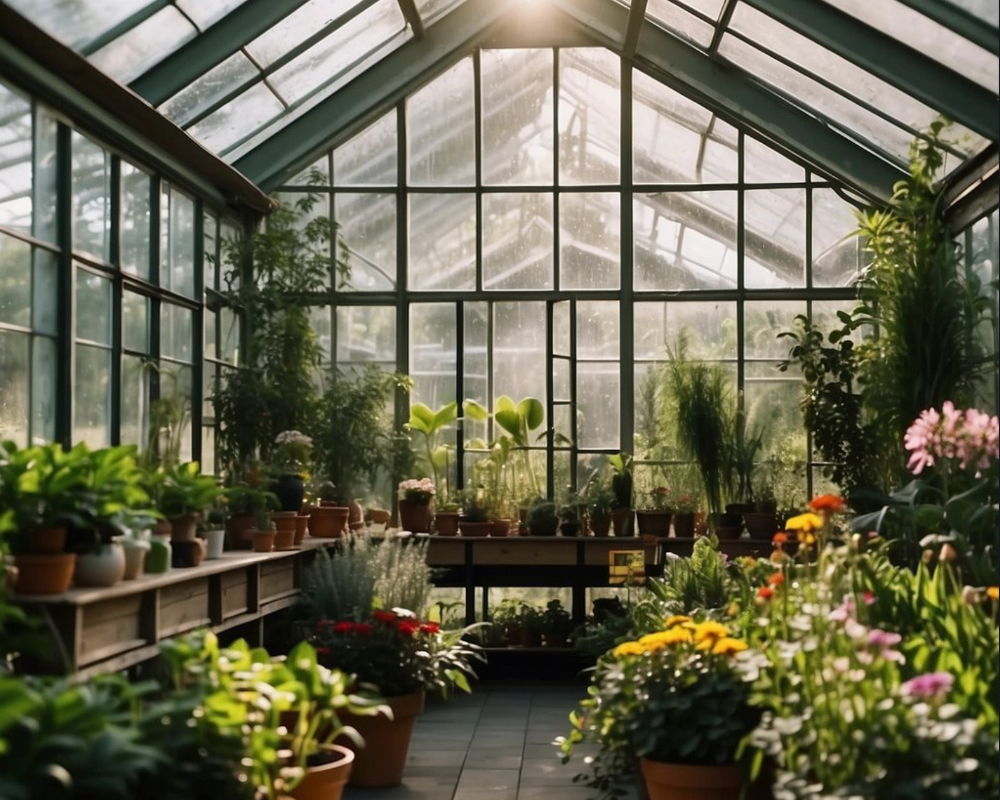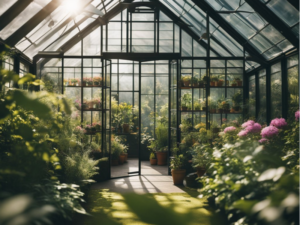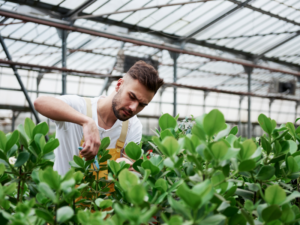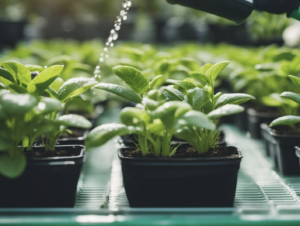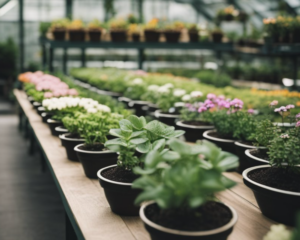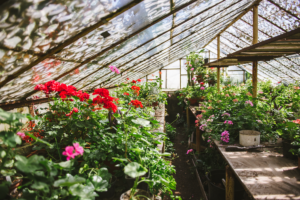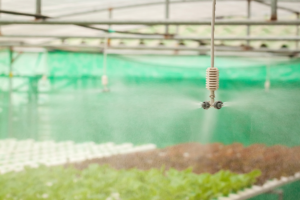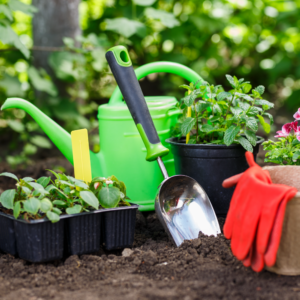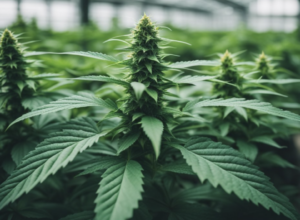Glass greenhouses have become a cornerstone in modern horticulture, providing an ideal environment for plant growth regardless of the external weather conditions. These structures are designed to create a controlled habitat, where temperature, humidity, and light are manipulated to optimize the growth of plants. Made of transparent materials, typically glass, they allow sunlight to enter while keeping the internal climate consistent.
The popularity of glass greenhouses stems from their ability to extend growing seasons, allowing for year-round cultivation of fruits, vegetables, and flowers. They are also pivotal in research, giving scientists the ability to study plant behaviors under specific conditions. This ability to control environmental factors has revolutionized agriculture, helping to meet the demand for food in challenging climates and during off-season periods.
Aside from their practical applications, glass greenhouses are visually appealing structures that often become architectural landmarks. They come in various sizes, from small backyard models to vast commercial complexes, reflecting the scalability of their design. This adaptability ensures that they can cater to the needs of different users, from hobby gardeners to large-scale farming operations.
Understanding Glass Greenhouses
Glass greenhouses are structures designated for growing plants in controlled environments. They consist of a skeleton, typically made of metal or wood, ensconced in glass panels that allow sunlight to enter while maintaining a stable internal climate.
Why Glass?
Glass is valued in greenhouse construction for its clarity and durability. It permits maximum sunlight penetration and offers a more consistent temperature environment compared to other materials.
Types of Glass Greenhouses:
- Traditional Glass Greenhouse: This type has been around for centuries, featuring a peaked roof and straight walls.
- Modern Glass Greenhouses: These often have more intricate designs with various shapes and improved functionality.
Advantages:
- Sunlight: They excel at transmitting natural light.
- Aesthetics: They offer an elegant appeal and blend well with different landscapes.
Drawbacks:
- Cost: Initial investment and maintenance can be high.
- Temperature Control: They can require additional cooling in hot climates.
When considering a glass greenhouse, individuals might ponder its energy efficiency. Glass greenhouses can lose heat quickly, so efficient heating systems are critical for colder climates. They can also incorporate technologies like double-glazing to enhance insulation.
Design and Structure
Glass greenhouses are a marriage of form and function, embodying sleek design with practical construction. They blend the transparency of glass with the resilience of their framing to create spaces that are as beautiful as they are usable.
Materials
Glass greenhouses primarily use glass for their covering and aluminum or wood for the framing. Aluminum frames offer strength and durability with less upkeep, while wood frames provide a more traditional look. Polycarbonate panels are a robust alternative offering similar light transmission with added impact resistance.
Dimensions and Extension
The standard dimensions of glass greenhouses vary widely, but typical lengths and widths can range from 6 to 20 feet. They are often designed to be extendable, allowing for customized sizes based on gardener’s needs. Extending a greenhouse usually involves adding sections to the existing aluminum frame.
Foundation and Assembly
Sturdy greenhouses start with a solid foundation, which can include concrete piers or a full concrete slab. Reliable assembly requires accurate fitting of the aluminum frame, which supports the glass or polycarbonate panels. Foundation options depend on size, local weather conditions, and the gardener’s preferences.
Types of Glass and Coverings
Typically, greenhouses utilize tempered glass covering for enhanced safety and resilience. An optional covering for certain areas might include polycarbonate panels for their ability to resist breakage. Innovation in materials continues to offer gardeners more choices in coverings.
Aesthetic Features
Aesthetic appeal is key in glass greenhouse designs. They often feature a painted finish with colors ranging from classic white to earthy brown. The clarity of glass coupled with the right frame and finish can turn a greenhouse into a striking backyard feature.
Accessibility
Access to glass greenhouses is usually provided through doors such as single, double doors, or even a storm door for added weather protection. The door(s) design can be matched to the theme of the home or garden for a cohesive look.
Roof and Ventilation
Effective greenhouse designs integrate roof features that promote good air circulation like roof vents. These can be manual or automated roof vents, which adjust to temperature changes to help regulate the internal climate. Properly placed vents, combined with the door layout, ensure that plants receive ample ventilation.
Functional Aspects
Exploring the functional aspects of glass greenhouses, it’s about how they manage light and maintain ideal growing conditions throughout the year.
Light and Insulation
Light transmission through glass is a key feature, allowing a full spectrum of natural light to reach plants. This natural sunlight is essential for photosynthesis and growth. Insulation is equally important; glass panels, particularly double-glazed ones, provide a level of thermal retention. This means that heat is trapped inside the greenhouse, which can be beneficial for extending the growing season into the cooler months.
- Light Transmission: Maximizes natural light entry
- Insulation: Helps retain heat, allowing for lower energy costs
Seasonal Uses
Utilizing a glass greenhouse enables year-round gardening by protecting plants from extreme weather conditions. In the winter, it shields plants from cold and snow, while in the warmer months, it allows for the production of crops that would otherwise not thrive due to temperature fluctuations.
- Winter: Protects from snow and cold
- Summer: Offers a stable environment for heat-sensitive plants
Regulating Conditions
Keeping the internal environment of a greenhouse at the optimum level involves controlling humidity, ventilation, and temperature. Roof vents are often used to manage these aspects, as they can be opened or closed to adjust the moisture level and reduce condensation. Proper ventilation also helps to regulate the temperature and prevent overheating in the summer months.
- Humidity Control: Roof vents and opening panels adjust moisture levels
- Ventilation: Essential to maintain air circulation and temperature balance
Maintenance and Cleaning
Regular maintenance and cleaning are pivotal to the longevity and efficacy of a glass greenhouse. They typically inspect the structure for chips and cracks during maintenance, ensuring the integrity of the glass is intact. Rust on the frame and hardware should be treated promptly to prevent structural weakness.
For cleaning, they recommend a gentle yet effective approach:
- Frequency: Clean the glass at least twice a year, more in dusty areas.
- Materials: Use a soft cloth or sponge with mild soap and water.
- Hard to reach places: Employ a telescopic brush or hire a professional for safety.
To maintain a stable environment:
- Check seals and vents to ensure they are airtight and functioning.
- Lubricate moving parts yearly.
- Replace any worn or damaged components as needed.
Remember, gentle cleaning preserves the clarity of the glass, while thorough maintenance ensures the greenhouse remains a robust haven for plants year-round.
Cost Considerations
When planning to build a glass greenhouse, they need to take into account various cost factors. The initial price outlay includes the cost of materials like glass panels, framing, and foundation materials. Glass is typically more expensive than plastic or polycarbonate alternatives, so they should be prepared for a higher upfront investment.
- Glass quality: They have the option of choosing between standard and tempered glass. Tempered glass is more durable but also more costly.
- Size: A larger greenhouse will obviously cost more in terms of materials and labor.
- Design complexity: Custom designs may increase the budget due to specialized labor or harder-to-find materials.
When they budget, they should not forget to factor in ongoing maintenance and operation costs. Heating in the winter and cooling in the summer can add considerably to the overall expenses. They can reduce these costs by opting for more energy-efficient solutions.
Potential Additional Costs:
- Shelving: They’ll need somewhere to put all those plants. Good quality shelving can be an added expense.
- Irrigation system: While they could water by hand, an automatic system can save time but will affect their initial outlay.
- Transportation: Large glass panels aren’t only fragile; they’re expensive to transport.
Sometimes, they can snag a deal due to a sale; it may be beneficial to keep an eye out for seasonal discounts from suppliers or end-of-season sales. However, she should remember that the cheapest option isn’t always the best in the long run. It’s important to balance initial costs with the expected lifespan and maintenance of the greenhouse.
Selecting a Greenhouse
When they’re in the market for a greenhouse, gardeners should compare options and weigh features that best suit their needs.
Comparing with Alternates
Glass Greenhouses offer long-lasting clarity and typically come with a lifetime warranty, but they can be more costly and heavier than their counterparts, making shipping a consideration. Polycarbonate Greenhouses present a less expensive, durable alternative with good light diffusion, often with a 10-year warranty. However, they don’t match the classic aesthetic of glass. For those needing their greenhouse shipped, motor freight carrier is usually the method used. Buyers should check the motor freight requirements and ensure they’re in the contiguous United States to avoid complications.
Features and Add-ons
When selecting a greenhouse, a 24-degree pitch roof with trusses can offer optimal sunlight and durability. Automatic roof vents, or even better, automated roof vents, are critical for temperature control without constant monitoring. Greenhouses should have stainless steel hardware to resist rust and ensure longevity. Some sellers allow you to order by phone and may include video tutorials for assembly. It’s wise to ask about shipping policies and whether there’s a slab warranty on top of product warranties.
Greenhouse Setup
Setting up a greenhouse requires careful planning, from picking the right location to ensuring it’s well-equipped with necessary accessories and equipment. It’s a step-by-step process that ensures the garden thrives in its new environment.
Planning and Location
Before a single piece of glass is installed, the prospective greenhouse owner must find the perfect spot in their garden. Site selection is crucial – they’ll need a location that receives ample sunlight, is protected from harsh winds, and has good drainage. Accessibility is another factor to consider, ensuring that it’s convenient to reach for frequent visits and maintenance.
Building Your Greenhouse
Once a location is chosen, the assembly process begins. It’s time to construct the framework, typically using materials like aluminum, wood, or PVC. The builder would then install the glass panels that make up the walls and roof. Good ventilation is key, so they need to incorporate vents and doors that allow for air circulation. A well-ventilated greenhouse helps in controlling temperature and humidity, which is vital for plant health.
Accessories and Equipment
- Vents: Automated or manual, essential for air exchange
- Doors: Wide and secure for easy access and equipment movement
- Shelving: To maximize space and organize plants
- Watering System: For consistent moisture
- Thermometer/Hygrometer: To monitor internal conditions
Ensuring that the greenhouse is equipped with the right accessories and equipment is necessary for its functionality. Shelving optimizes space, while a reliable watering system keeps plants hydrated. Additionally, installing a thermometer and hygrometer helps in maintaining the ideal climate inside the greenhouse.
Longevity and Sustainability
Greenhouses constructed from glass are designed for durability and can last many years with proper upkeep. Their longevity is tied to the quality of materials and the level of maintenance they receive. Glass panels, inherently strong, resist scratching and do not become opaque over time, ensuring consistent light transmission for plant growth.
Maintenance: Regular cleaning and inspection can prevent the deterioration of seals and the structure. They need to check for cracks or breaks in the glass and promptly repair any damage to prevent structural issues.
Material Strength: The choice of framework material, whether aluminum or galvanized steel, also impacts the greenhouse’s strength. These materials resist corrosion and can withstand harsh weather conditions.
Sustainability Aspects:
- Glass is a sustainable choice due to its recyclability.
- They can integrate rainwater harvesting systems to optimize water usage.
- Upgrading to energy-efficient glass or adding double glazing can enhance thermal retention, reducing energy consumption for heating.
Maintenance Tips:
- Inspect regularly. Look for signs of wear and tear.
- Clean the glass. This maximizes light penetration.
- Check ventilation. Ensure the system functions properly for temperature control.
- Structural elements. Examine steel or aluminum parts for rust or corrosion.
By adhering to these guidelines, the glass greenhouse remains a sustainable option for growers, blending resilience and environmental consciousness.
Plant Care and Growth
In a glass greenhouse, they enjoy an optimal environment for plant growth. With walls and roofs allowing ample natural light to filter through, plants thrive with the high levels of light transmission intrinsic to glass structures. It’s key, though, to manage the intensity and duration of sunlight exposure to prevent scorching.
Ventilation is another critical aspect. Strategic placement of vents allows air to circulate, keeping temperature and humidity in check. Gardeners often use automated systems that open vents when it’s too warm and close them when the temperature drops.
Here’s what they keep an eye on for healthy plants:
- Light: They ensure plants get enough light without overheating.
- Ventilation: Proper airflow prevents fungal growth and strengthens plants.
- Humidity: Balancing moisture levels reduces pests and diseases.
For humidity, they use tools like hygrometers to maintain the sweet spot that promotes healthy plant life. Achieving the balance between too much and too little moisture is an art they often master with practice and attention to detail.
Garden Integration
When incorporating a glass greenhouse into a garden, it’s crucial to consider both its functional role and how it’ll complement the area’s aesthetic appeal. A greenhouse, by nature, is a practical extension of any garden, providing a controlled environment for plants to thrive. It’s where they can soak up the warmth and light, safe from harsh weather.
To ensure a seamless look, one might choose a greenhouse design that echoes the style of the existing garden. Think about the materials—using similar woods or metals can help integrate the structures. Additionally, matching color schemes between the greenhouse and garden elements such as fences, garden furniture, or even plant pots can create a cohesive appearance.
Here’s a quick breakdown to visualize the integration strategy:
- Design Matching:
- Use materials that complement the garden setting.
- Align color schemes with existing garden elements.
- Location and Layout:
- Position the greenhouse for maximum sunlight without obstructing garden views.
- Integrate paths or stepping stones to connect the greenhouse with the garden seamlessly.
The layout is paramount. A strategic placement ensures the greenhouse doesn’t obstruct key sightlines and optimizes sunlight exposure. They might outline a pathway leading to the greenhouse with plants or decorative stones to make it an inviting part of the garden journey.
Lastly, the functional aspect isn’t neglected; shelves and planting tables inside can mirror the garden’s organization, creating a sense of continuity. Whether for propagation or year-round growing, the greenhouse serves as an essential hub for gardening activities.
Frequently Asked Questions
In this section, readers can find straightforward answers to common queries about glass greenhouses, from material differences to style options and practicality considerations.
What’s the difference between tempered glass and regular glass in greenhouse construction?
Tempered glass is stronger and safer than regular glass, as it’s heat-treated to increase its strength and shatter into small, blunt pieces if broken. Regular glass is less expensive but can shatter into sharp shards, posing a risk.
How much would it cost to get a new glass greenhouse set up?
The cost of a new glass greenhouse can vary widely depending on size, materials, and complexity of the design. Prices can range from a few hundred dollars for a basic model to several thousand for a custom-built, large-scale structure.
What styles, like Victorian, are there for glass greenhouses?
Glass greenhouses come in various styles, including Victorian with ornate details and peaked roofs, modern with minimalist aesthetics, and traditional with a focus on functionality. Each style can be tailored to complement a home or garden’s existing architecture.
Where can I find glass greenhouses for sale?
Glass greenhouses are available from specialized garden centers, home improvement stores, and online retailers. One can also contact local greenhouse manufacturers or builders for custom designs.
Can large glass greenhouses be practical for home gardeners?
Large glass greenhouses can be practical for home gardeners if they have sufficient space and require a significant area for plant cultivation. They offer extended growing seasons and protection from pests and weather.
How do I choose the right glass panels for my greenhouse?
When selecting glass panels for a greenhouse, consider the local climate, exposure to sunlight, and durability needs. Tempered glass is recommended for safety, while other options like double-glazing can provide better insulation.

